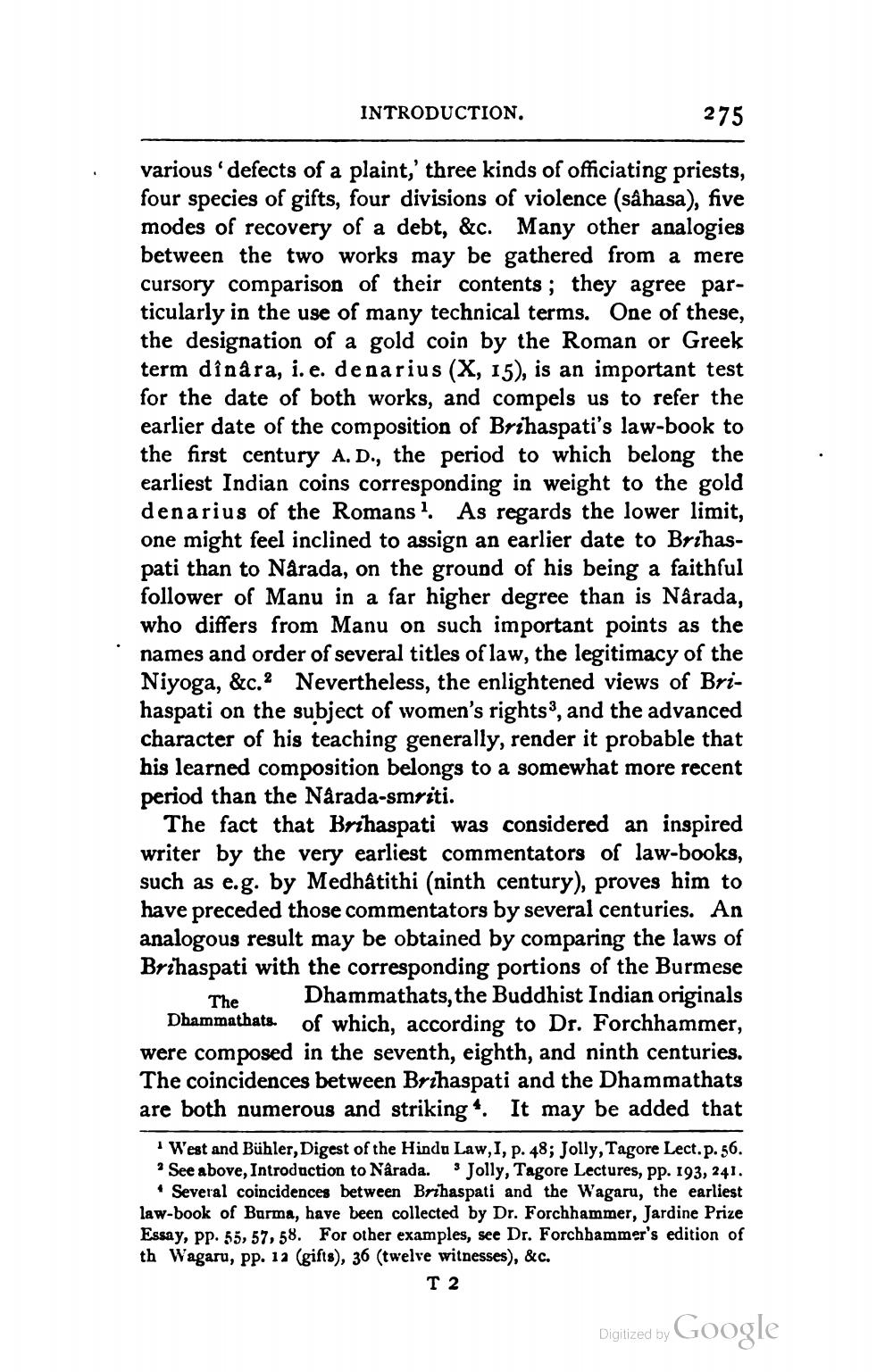________________
INTRODUCTION.
275
various 'defects of a plaint,' three kinds of officiating priests, four species of gifts, four divisions of violence (sâhasa), five modes of recovery of a debt, &c. Many other analogies between the two works may be gathered from a mere cursory comparison of their contents; they agree particularly in the use of many technical terms. One of these, the designation of a gold coin by the Roman or Greek term dinara, i.e. denarius (X, 15), is an important test for the date of both works, and compels us to refer the earlier date of the composition of Brihaspati's law-book to the first century A. D., the period to which belong the earliest Indian coins corresponding in weight to the gold denarius of the Romans? As regards the lower limit, one might feel inclined to assign an earlier date to Brihaspati than to Narada, on the ground of his being a faithful follower of Manu in a far higher degree than is Närada, who differs from Manu on such important points as the names and order of several titles of law, the legitimacy of the Niyoga, &c.2 Nevertheless, the enlightened views of Brihaspati on the subject of women's rights, and the advanced character of his teaching generally, render it probable that his learned composition belongs to a somewhat more recent period than the Närada-smriti.
The fact that Brihaspati was considered an inspired writer by the very earliest commentators of law-books, such as e.g. by Medhâtithi (ninth century), proves him to have preceded those commentators by several centuries. An analogous result may be obtained by comparing the laws of Brihaspati with the corresponding portions of the Burmese
The Dhammathats, the Buddhist Indian originals Dhammathats. of which, according to Dr. Forchhammer, were composed in the seventh, eighth, and ninth centuries. The coincidences between Brihaspati and the Dhammathats are both numerous and striking. It may be added that "West and Bühler, Digest of the Hindu Law, I, p. 48; Jolly, Tagore Lect.p.56.
See above, Introduction to Närada. Jolly, Tagore Lectures, pp. 193, 241. * Several coincidences between Brihaspati and the Wagaru, the earliest law-book of Burma, have been collected by Dr. Forchhammer, Jardine Prize Essay, pp. 55, 57, 58. For other examples, see Dr. Forchhammer's edition of th Wagaru, pp. 12 (gifts), 36 (twelve witnesses), &c.
T2
Digitized by Google




